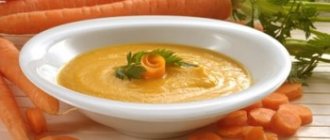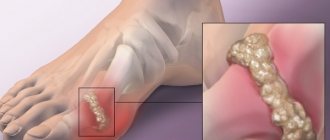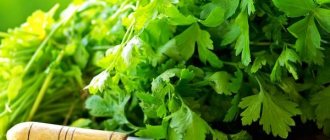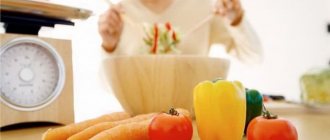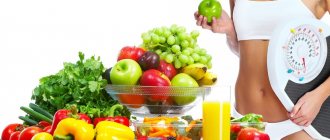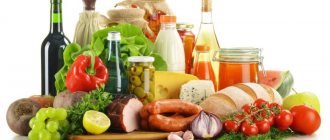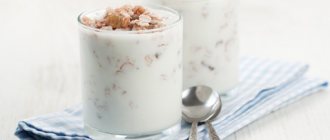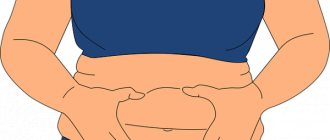Why do you need a diet?
Patients with joint diseases need to eat properly in order to reduce the concentration of uric acid in biological fluids of the body and ensure its timely elimination by the kidneys. To achieve results, the main requirement is to exclude puric acids from the diet, which, when destroyed, form uric acid. Then, during exacerbations of gout, the patient suffers from an acute attack of pain and a decline in performance. A diet with elevated uric acid in the blood guarantees the normalization of metabolic processes and eliminates relapses of gout.
The role of diet in treatment
Diet is the main part of therapy for gout. The disease is associated with metabolic disorders resulting from poor nutrition. The body cannot cope with excess uric acid, which is deposited in the form of salts.
To normalize the biochemical composition of the blood and relieve symptoms, a diet containing alkalizing foods is prescribed. They regulate the acid-base balance of the body, preventing the accumulation of uric acid salts. To do this, vegetables and fruits are included in the diet for gout. The diet also includes the consumption of foods rich in proteins, such as milk and fermented milk products.
Drinking plenty of fluids helps remove excess uric acid and improve kidney function. It is useful to drink alkaline mineral water with a reduced gas content on an empty stomach.
Patients with gout are prohibited from eating foods of plant and animal origin with a high content of purines - nitrogen-containing compounds that form uric acid salts during metabolism. For example, in organ meats (liver, kidneys), meat of young birds and animals, shellfish, fish (especially small fish), beans and beans, and mushrooms, the concentration of purines is especially high, so during acute periods they are completely excluded. The same applies to sausages, canned food and smoked meats.
If you follow a diet, gout attacks are stopped, and if you follow the correct diet constantly, then periods of exacerbation cease to recur.
General rules of nutrition for illness
If a patient's gout progresses, in order to live without pain, it is necessary to choose an antipurine daily diet, that is, to minimize the presence of this acid in the daily menu. To do this, you can choose a strict vegetarian diet or not be categorical and adhere to the following medical recommendations:
- Eliminate protein foods from the daily menu as much as possible, since protein metabolism increases the concentration of urates in tissues.
- Drink plenty of fluids, which reduces the concentration of uric acid and promotes the elimination of salt naturally.
- Reduce your consumption of table salt as much as possible, choose fresh and lean dishes without adding spices.
- It is very important to eliminate the feeling of hunger, so the diet can be reasonably high in calories and satisfying. Stop fasting immediately, otherwise a gout attack is guaranteed.
- It is important to remember the list of permitted and prohibited foods, since you will have to adhere to the updated diet throughout your life.
Permitted and prohibited products
Uric acid is formed as a result of metabolism in the body, namely, during the breakdown of purines, which a person consumes with food.
Therefore, patients with gout are advised to limit the number of foods containing high amounts of purines in their diet.
List of allowed and prohibited foods for gout:
| Foods high in purines that you should avoid | Foods with moderate purine content, the consumption of which should be limited | Foods that can be consumed in unlimited quantities for gout |
| By-products – liver, kidneys, heart, brain | Red meat – beef, pork, lamb | Fruits – patients with gout can eat all fruits |
| Game – pheasant, hare, rabbit, venison | Poultry – duck, chicken, turkey | Vegetables – potatoes, eggplants, dark leafy vegetables |
| Fatty fish – anchovies, herring, mackerel, sardines, trout | Peas, beans and other legumes | Dairy products – low-fat milk, cheese, yogurt, sour cream, butter |
| Seafood – mussels, crabs, shrimp and other shellfish, caviar | Mushrooms | Eggs |
| Alcoholic drinks – wine, beer and liquor | Some vegetables – asparagus, cauliflower, spinach | Nuts |
| Fructose-rich foods - fruit juices and sweet waters, confectionery | Whole grain products – bran, oats, whole grain bread | Drinks – coffee, black and green tea |
| Products with refined carbohydrates - white bread, sweets, pasta (except whole grains) | Herbs and spices | |
| Vegetable oils (olive, flaxseed, sunflower) |
Prohibited foods for gout
4 groups of healthy foods
A balanced and rational diet helps control weight and provides the body with all the necessary nutrients.
The diet for a patient with gout should include a variety of foods from four main groups every day:
- Vegetables and fruits provide the body with fiber, vitamins, minerals and other beneficial plant substances necessary for health.
- Whole grains and potatoes also provide the body with vitamins, minerals and fiber.
- Moderate amounts of meat and fish (1-2 times a week).
- Moderate amount of dairy products (daily one glass of milk, or kefir, or yogurt, or 100 g of cottage cheese).
All people, including patients with gout, benefit from avoiding highly processed foods (smoked foods, processed foods, white flour pastries, noodles and instant soups) or reducing their consumption as much as possible.
Healthy foods and vitamins
Scientific studies have shown that men who consumed large amounts of vitamin C developed gout significantly less frequently.
Taking 500 to 1,500 mg of vitamin C tablets reduces uric acid levels in the blood. This occurs due to the fact that the kidneys, when receiving ascorbic acid, begin to work more intensely and remove uric acid faster. It is difficult to get the same amount of vitamin C from food. For example, to obtain 1000 mg of ascorbic acid, a person must eat 2 kg of oranges or lemons per day.
Consuming sour cherries or cherry juice has a therapeutic effect - it reduces uric acid levels in the blood and helps reduce inflammation during exacerbations of the disease.
Diet for high uric acid in women
Since a characteristic disease progresses much more often in the female body with age (during the upcoming menopause), patients should clearly understand that overall well-being, performance, physical activity and emotional stability depend on a properly selected diet. The diet for gout on the legs provides the following rules for the treatment of representatives of the fairer sex:
- The diet includes 5-6 meals. These are three main meals with a hearty breakfast, plus additional snacks throughout the day.
- The doctor very precisely stipulates the norms of certain products, and it is important not to violate them. For example, boiled meat for gout can be eaten only 3 times a week, no more.
- In the absence of extensive pathologies with the kidneys, a patient with gout is allowed to drink up to 3 liters of fluid per day.
Daily intake of protein and water in the diet
Purines are part of proteins, so it is not surprising that the diet for gout limits their intake. However, proteins are needed by the body for tissue growth and repair, and as a source of energy.
Patients with gout should provide their body with proteins from foods of animal and plant origin. Scientific evidence suggests that a vegetarian diet, even when eating purine-rich foods such as lentils, is less likely to cause gout flare-ups.
The body needs 1 g of protein per 1 kg of body weight per day.
Protein content in products:
- 100 g chicken breast – 22 g;
- 100 g cod fillet – 21 g;
- 1 large egg – 6 g;
- 30 g hard cheese – 8 g;
- 30 g cottage cheese – 18 g;
- 30 g almonds – 5 g protein.
Examples of protein content in various dishes. Edamame is soybeans. Ribeye steak is the most famous type of steak; from beef. 8 ounces is approximately 240 grams
Drinking water
Adequate fluid intake in the diet reduces the likelihood of uric acid crystals forming in the kidneys.
Doctors recommend drinking 8 glasses (1.5 liters) of fluid per day. This amount includes all drinks (except alcohol) - plain and mineral water, tea, coffee.
People with gout who are taking diuretics or have heart or kidney problems should discuss how much water they should drink with their doctor.
Diet for gout with obesity
To reduce the concentration of uric acid, the patient must get used to the regimen and eat at regular intervals. However, each clinical picture has its own individuality. For example, obesity of one degree only intensifies an acute attack of pain due to gout, however, starving is extremely dangerous. The optimal solution is dietary table No. 6, which provides the following rules:
- completely avoid eating fatty, fried and floury foods;
- increase fluid intake to 3 liters per day;
- adhere to a daily vegetarian diet;
- choose bread made from wheat or rye flour;
- do not forget about the enormous benefits of natural vitamins.
What can you eat if you have gout?
To cleanse the blood of uric acid as much as possible, it is important to properly formulate a diet, control the flow of fluid into the body, and get vitamins from fresh fruits and vegetables. It is not recommended to choose a strict diet, since it also has its disadvantages, and the patient should always feel full. Here are the ingredients your diet should contain to ensure your uric acid levels are reduced to acceptable levels.
| Categories of permitted food products | Names of food ingredients |
| fresh vegetables | cucumbers, tomatoes, carrots, beets, pumpkin, potatoes |
| dairy, fermented milk | low-fat cottage cheese, kefir, milk, yogurt, feta cheese |
| fresh fruits | oranges, lemons, apples, pears, peaches, apricots |
| dried fruits | dates, dried apricots |
| meat (in small portions) | chicken, turkey, rabbit |
| cereals | pearl barley, barley, wheat, buckwheat |
| eggs | chicken, quail |
| fats | olive oil |
| spices | bay leaf, cinnamon, vanilla, lemon juice. |
| sweets | nuts, honey |
What kind of fish can you eat?
Since fatty meats and first broths cannot be consumed for gout, patients on a therapeutic diet radically change their taste preferences and choose fish. These must be low-fat varieties, cooked in boiled form in portions of up to 200 g per day. Squid, mussels, crayfish and shrimp are especially useful for gout, but the following types of fish are prohibited:
- herring;
- sardines;
- sprats;
- cod;
- pike.
What kind of meat can you eat
A gout diet does not mean that the patient will have to give up meat dishes forever and become a vegetarian. However, you will still have to make certain adjustments to your taste preferences. For example, fried cutlets will have to be replaced with steamed ones, and fatty pork with lean beef or rabbit. Therefore, it is advisable for all patients with gout to learn new recipes so as not to suffer from increased concentrations of uric acid and attacks of acute pain.
What is a low purine diet?
A low purine diet involves reducing your consumption of certain foods. This is necessary to reduce the purine metabolic pathways that are responsible for converting purines into uric acid.
Healthy whole foods - nuts, fruits, seeds, vegetables and legumes - are encouraged as part of the diet. And seafood, liver, red meat and game are best consumed only in small quantities.
Foods high in fructose, a type of simple sugar, should also be consumed in limited quantities. Fructose is broken down into purine, which can increase uric acid levels in the body. Fructose is found naturally in fruits. However, these foods are also rich in fiber, minerals and vitamins, which offset any negative effects.
Conversely, fruit juices, soft drinks and processed foods typically contain enormous amounts of fructose. Therefore, ori should be limited to a low purine diet.
Diets high in purines are recommended for those with gout or certain types of kidney stones. It is necessary to prevent outbreaks and reduce symptoms. To prevent the formation of uric acid kidney stones, a low-purine diet is sometimes recommended.
Healthy drinks
If you have gout, you will have to stop drinking alcohol forever, or rather reduce its intake to 100 g “on holidays.” From strong tea and coffee too. It is important to increase your daily fluid intake to 3 liters. We are not just talking about water, you can drink milk jelly (low-fat), berry and fruit compotes, pumpkin, carrot and celery juices, alkaline mineral waters, herbal decoctions. Some people prefer fruit drinks made from apricots, pears and apples - it is also very useful for gout.
What not to eat
To reduce the frequency of relapses, the diet for progressive gout and high uric acid specifies a list of prohibited foods. It is better to avoid such food ingredients altogether, otherwise it will be very problematic to stabilize your overall well-being. So:
| Food category name | Name of food ingredients |
| fresh vegetables | all types of cabbage, mushrooms, sorrel |
| cereals | soy, oatmeal, lentils |
| berries and dried fruits | grapes, raisins |
| legumes | beans, beans, peanuts, peas |
| milk products | salty, spicy, fatty cheeses |
| sweets | cakes, baked goods, homemade baked goods |
| beverages | coffee, cocoa, strong tea, alcohol |
Sample menu for the day
To reduce the production of purines and prevent the formation of uric acid, doctors recommend a diet. It is advisable to determine the daily diet together with a professional, thereby protecting your own body from so-called “accidental relapses”. Here is a sample patient menu for the day:
- after waking up - rosehip decoction;
- breakfast – buckwheat with water or skim milk;
- second breakfast – sweet tea with milk;
- lunch - a vegetable dish with the addition of carrots and potatoes;
- afternoon snack – compote, green apple (peanuts are prohibited for gout);
- dinner - fruit salad.
What foods and dishes are prohibited for gout?
- Fat meat;
- mushroom, fatty and rich meat and fish broths;
- gravies and sauces prepared on the basis of meat broths;
- animal fats;
- aspic;
- meat by-products;
- smoked dishes;
- caviar;
- canned fish;
- legumes;
- raspberries;
- grape;
- figs;
- raisin;
- semi-finished products;
- spices;
- pickles;
- baked goods;
- chocolate;
- rich pastry cream;
- cocoa, coffee and strong black tea;
- dishes with preservatives;
- alcoholic drinks and beer.
Menu for gout for a week
Complex carbohydrates must be supplied to the body in order to control not only the uric acid level, but also the patient’s weight. When choosing dairy foods, it is important not to forget about their calorie content, and you will have to completely abandon baked goods and homemade baked goods. Here is a sample menu for a week that will help you forget about gout attacks for a long time:
- Monday: breakfast - vegetable salad, lunch - milk soup, dinner - vegetable cabbage rolls.
- Tuesday: breakfast - cheesecakes with kefir, lunch - mashed potatoes with steamed fish, dinner - fermented baked milk.
- Wednesday: breakfast - cottage cheese casserole, lunch - vegetable soup, dinner - baked vegetables.
- Thursday: breakfast - carrot casserole, lunch - buckwheat with steamed cutlets, dinner - boiled beets, jelly.
- Friday: breakfast - sweet rice with apples, lunch - vegetarian borscht, dinner - vegetable stew and compote;
- Saturday: breakfast - vegetarian okroshka, lunch - stewed vegetables, dinner - boiled fillet.
- Sunday: breakfast – buckwheat with milk, lunch – barley, dinner – pancakes with bananas.
Seven-day menu for diet No. 6
Proper nutrition, which is recommended for patients with gout, is varied. In addition, all the recipes are very simple, and the dietary dishes are tasty and satisfying. Everyone can choose from the permitted products those they like best.
Monday
For breakfast: cheesecakes with honey, chamomile tea. For lunch: rice soup with potatoes, buckwheat with boiled chicken, a piece of black bread. For an afternoon snack: fruit casserole of apples and carrots, a glass of rose hips. For dinner: baked eggplants, boiled veal, compote. Before bed: a glass of fermented baked milk.
Tuesday
For breakfast: omelet from 3-4 quail eggs, milk sausage, fresh cucumber salad, chicory drink. For lunch: milk soup with pasta, potato pancakes with sour cream, green tea. For an afternoon snack: wheat bread toast, jam, a glass of alkaline mineral water. For dinner: steamed cod, stewed vegetable mixture with carrots and zucchini, bran bread. Before bed: yogurt.
Milk soup with noodles is low in calories, but is an excellent source of proteins and complex carbohydrates. In addition, this dish contains potassium, iodine, manganese, iron, copper, calcium, vitamins B, C and D
Wednesday
For breakfast: hard-boiled egg, rice porridge with milk, sandwich with white bread and cheese. For lunch: mashed potatoes with boiled turkey, cherry jelly. For an afternoon snack: cottage cheese with nuts and mashed prunes, a glass of milk. For dinner: stuffed peppers with sour cream sauce. Before bed: a glass of kefir.
Thursday
For breakfast: salad of grated apples and carrots, white bread toast with jam, weak tea. For lunch: lean borscht with sour cream, beef cutlet with millet porridge, black bread. For an afternoon snack: curd paste made from pureed cottage cheese with the addition of vanillin, butter and sugar. To prepare it, you need 200 g of cottage cheese, 15-20 g of butter, 2.5 tbsp of sugar and a pinch of vanillin. You can add sour cream or fruit to the finished pasta. For dinner: potatoes baked with cheese. This casserole is simple to make - cut the potatoes into thin slices and add salt to a small pan. Season with salt, add vegetable oil and place grated cheese on top. Cover the pan with foil and place in the oven for half an hour. Remove the foil 5-10 minutes before it’s ready. Before bed: chamomile tea.
Friday
For breakfast: sandwiches with doctor's sausage, pear jelly. For lunch: beetroot soup, sour cream if desired, noodles with chicken bits. For afternoon snack: carrot cutlets, tea. For dinner: soft-boiled egg, baked zucchini, orange juice. Before bed: apple.
Saturday
For breakfast: buckwheat with diluted milk, cottage cheese with vermicelli, rose hip decoction. For lunch: beef goulash with boiled potatoes, tea with lemon. For afternoon snack: a glass of carrot juice. For dinner: barley and vegetable soup, sandwiches with cheese, compote. Before bed: decoction of wheat bran.
